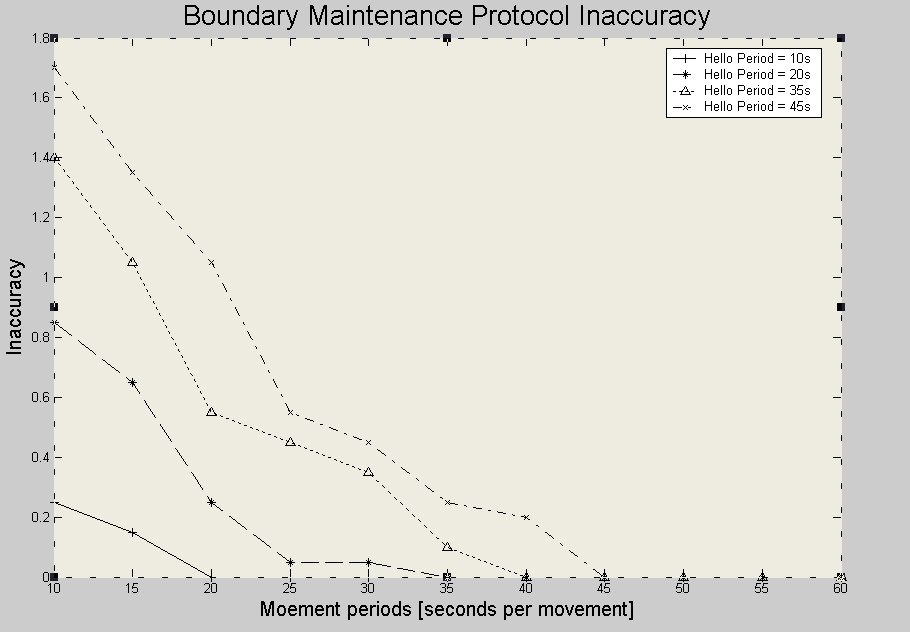
Boundaries Identificaion Protocol Simulation in mobile scenarios |
To evaluate the accuracy of the Boundary Identification Protocol in the case of node mobility,
we have considered a 100 nodes scenario. ES measured 1442x1442, while IS measured 771x771.
Participants were distributed so that the IS density was 8 time greater than the ES density.
This means that 65% ca. of participants was placed within the IS.
The number of neighbors required for belonging to the dense MANET was set to 11.
This value was experimentally obtained to make the dense MANET bounds almost coincide with
IS bounds.
In considered scenarios, all nodes are mobile, with the only constraint
that anytime a node exits from the IS,
another node enters it, in order to maintain the node density unchanged.
We have evaluated mobility patterns consistent with reasonable values for dense MANET
deployment scenarios: the simulations have considered one pair of random movements
of randomly chosen nodes (one entering and one exiting the IS) every M seconds,
with M that varies from 10 to 60 (increasing of 5 at each step).
Other parameters were set as follows:
| Paramter | Value |
| Hello Delay | 3 s |
Next figure reports the protocol inaccuracy (difference between the determined number of dense MANET participants and its actual value) in function of the mobility period M and for different values of the time interval used to periodically send Hello packets (from 10s to 45s). Each point in the graph represents an average value obtained by capturing the state of the network in 20 different runs.
